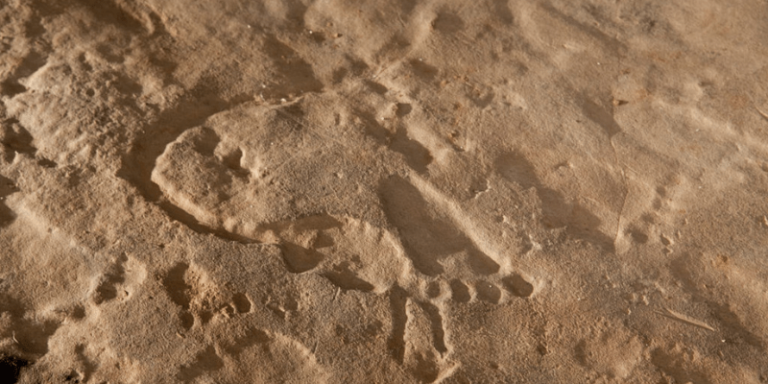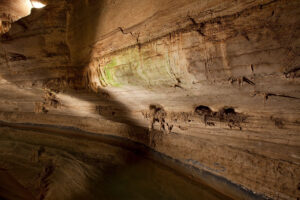Archaeologists Unveil America’s Largest Cave Painting in Alabama
One image is believed to be a depiction of the once-sacred diamondback rattlesnake.
By: Kirsten Brooker | May 27, 2022 | 458 Words

(Photo by Carol M. Highsmith/Buyenlarge/Getty Images)
Cave art can be found all around the world. However, recent discoveries in an Alabama cave reveal the largest art ever uncovered. One of the drawings was over ten feet long, drawn with mud, and depicted a rattlesnake. The massive image is believed to be over 1,000 years old. Commonly, cave art is either red or black in color. Archaeologists believe that the red pictures were created using iron oxides, while the black images used charcoal or manganese dioxide. However, carved artwork and clay sculptures have also been found over the years. Who is responsible for these artistic creations? And how far back do they date?
Alabama Cave Art
First spotted in 1998, the Alabama cave was never given a name and was kept secret to protect the discoveries within it. It was a complex area to navigate because of the shallow ceilings and over three-mile-long passageways. Much of the artwork was found in one chamber of the long underground tunnel. Hundreds of paintings covered the walls and ceilings, making it the most abundant cave art discovery in the American Southeast.

(Photo by Carol M. Highsmith/Buyenlarge/Getty Images)
Jan Simek, a professor in the Department of Anthropology at the University of Tennessee, said, “These images are different than most of the ancient art so far observed in the American southeast and suggest that our understanding of that art may be based on incomplete data.”
Archaeologists believe that Indigenous Americans – people that inhabited the Americas before the arrival of European settlers – are responsible for the historic images. The most common drawings are of animals such as lions, bears, rhinoceroses, and mammoths, but body parts, geometric signs, and religious symbols are also prevalent. Various tools were used to create the artwork, along with indications of pictures drawn with a person’s bare hands.
The Alabama cave holding the 10-foot image of a rattlesnake was the 19th unnamed cave in the state. The record-breaking glyph showed diamond-shaped patterns indicating that it was a representation of the diamondback rattlesnake – a creature sacred to the Indigenous people of the American southeast.
Because of the limited space inside the cave and the size of the art, it was hard to see the whole picture before. However, a new technology, called photogrammetry, has opened doors for archaeologists excited to continue uncovering the ancient drawings.
What is Photogrammetry?
Photogrammetry is a process that takes hundreds of digital images that are then combined to form a 3D image of the paintings. Some of the drawings are not visible to the naked eye, and others are in hard-to-reach places, so using the latest technology is crucial to discovering ancient cave art.
















